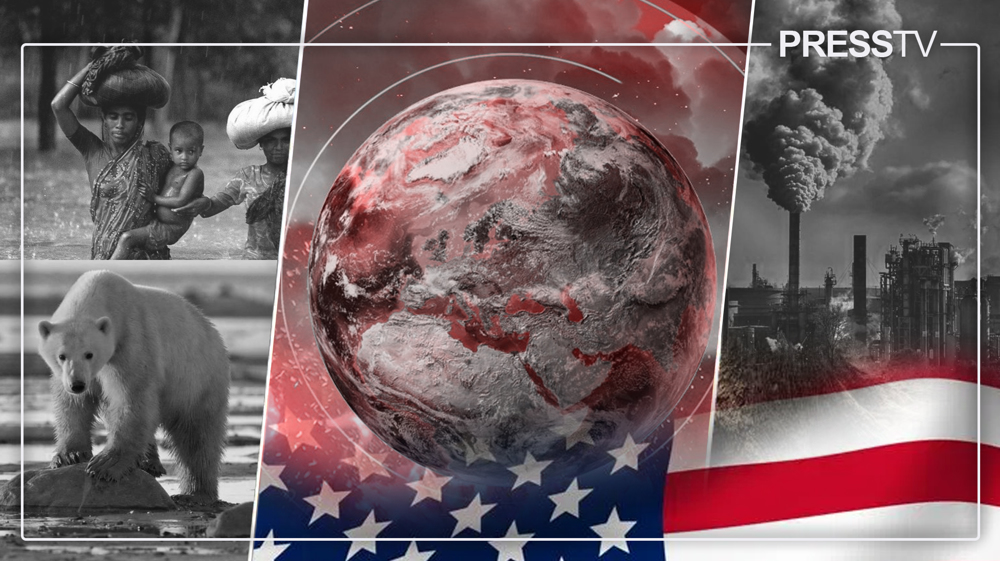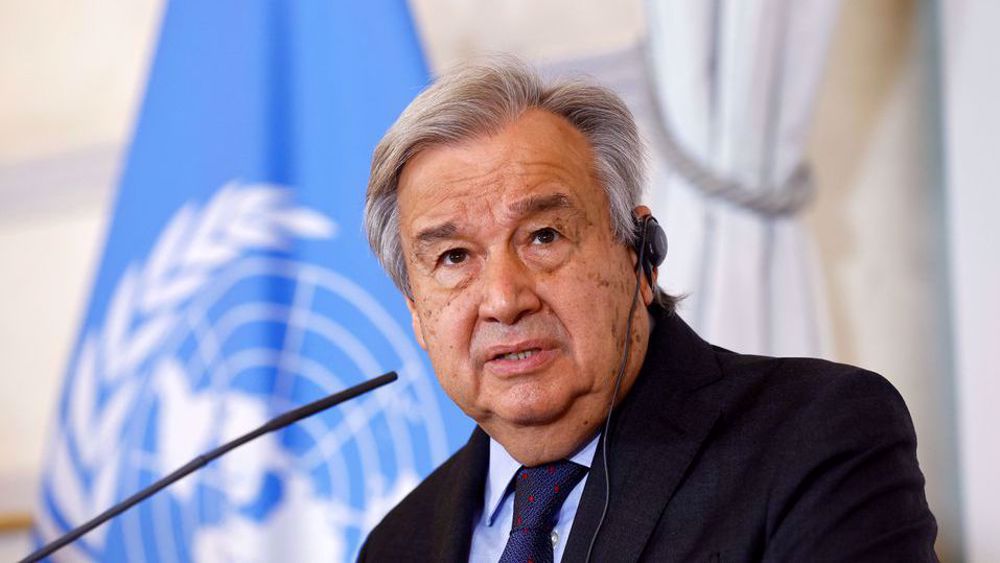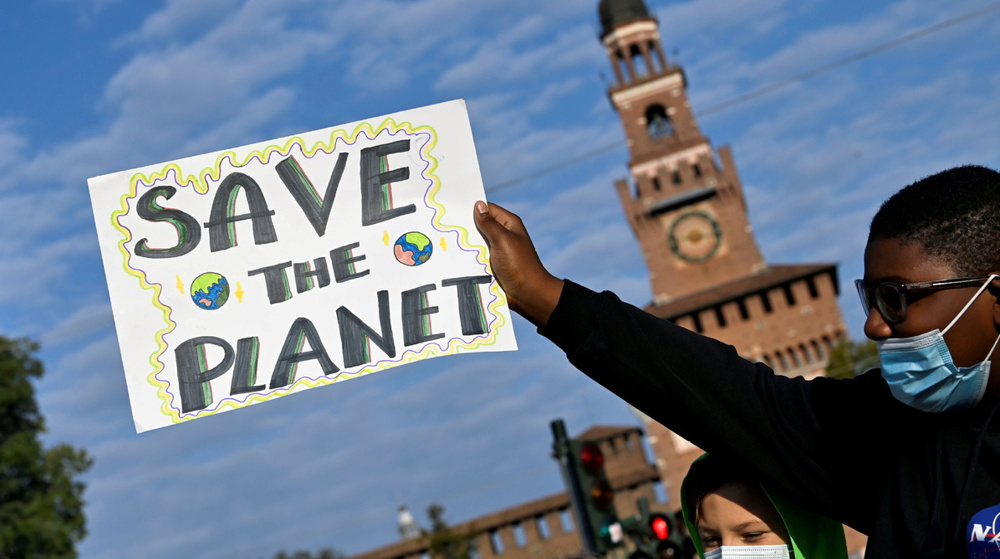How US, as biggest greenhouse gas emitter, is driving climate crisis
By Reza Javadi
Earlier this week, during his visit to Beijing, US climate envoy John Kerry called for “urgent action” to tackle the climate crisis, which has assumed alarming proportions in the wake of scorching heat waves and wildfires in many countries across the world.
Kerry spoke of “big steps” planned by the world’s two largest greenhouse gas emitters to “address a common risk, threat, and challenge to all of humanity created by humans themselves.”
“The climate crisis demands that the world’s two largest economies work together to limit the Earth’s warming,” Kerry tweeted after meeting his Chinese counterpart, Xie Zhenhua, on Sunday.
He, however, stopped short of acknowledging that the crisis has been manufactured by the US itself.
The United States has been the world's biggest polluter since the industrial revolution, emitting significant greenhouse gases, particularly carbon dioxide (CO2), according to various studies.
In 2022 alone, the US was responsible for 13 percent of the global CO2 discharge, emitting around five billion metric tons of CO2 into the global atmosphere, marking an increase of 8.5 percent from 2020 and 1.4 percent from 2021, according to Statista.
Fossil fuel sources accounted for around 80 percent of US energy consumption in 2022, according to a recent study by VC Elements.
About 10 percent of US energy use relates to coal and around 38 percent to oil. Coal, which is the world’s most affordable energy fuel, remains the largest source of energy-related CO2 emissions.
Each year, more than 30 giga-tons of CO2 are released into the Earth’s atmosphere, contributing to climate change as the main source of greenhouse gases, according to reports.
Fossil fuel use - US as the leader
The largest part of these gases comes from burning fossil fuels, generating energy through non-renewable channels, of which the US has had the largest share throughout history.
Earlier this month, the US came under criticism once again for emitting the world's largest amount of carbon dioxide (CO2) and other greenhouse gases, as the world recorded the highest-ever temperature at a global average of 62.9 degrees Fahrenheit on July 4.
Scientists say the target of keeping global warming within 1.5C of pre-industrial levels is getting harder.
The disastrous climate policies have become a defining feature of successive US administrations. The former administration, under President Donald Trump, played a particularly harmful role that is still adversely affecting the global environment and climate, according to experts.
In a report in late 2020, the Chinese ministry of foreign affairs described different environmental damages caused to the world by the US, specifically under Donald Trump’s administration.
“The Trump administration scrapped the Obama administration's Clean Power Plan, kept relaxing environmental restrictions on the development of the fossil fuel industry, and rescinded climate-related policy measures of the executive branch,” the report noted.
According to BloombergNEF, China is the world’s biggest investor in renewable energy, making up 55 percent of the globe’s total renewable energy investment.
"Each one has a long way to go, each one needs to egg the other on, and most importantly all the countries are watching to what degree the US and China absolutely are dead serious about the climate goals," Dan Kammen, an energy professor at the University of California, was cited by the BBC.
Ruining the environment is still on track
In utter disdain for climate and the environment, the US government approved a major oil and gas drilling project in Alaska in March, drawing strong opposition and condemnation from environmental activists, as it is set to generate up to 278 million metric tons of CO2e over its 30-year lifetime, according to US Bureau of Land Management estimates.
Located on Alaska's remote North Slope, the controversial Willow project is the largest oil development in the region for decades and could produce up to 180,000 barrels of oil a day.
The project was approved only a day after Joe Biden’s administration imposed limits on oil and gas drilling in 16 million acres of Alaska and the Arctic Ocean.
Environmentalists rallied in the US at the time to protest against the project, complaining that Willow is inconsistent with Biden's pledges to lead on climate action.
Furthermore, over one million letters of protest were written to the White House, and more than three million signatures were dedicated to a Change.org petition calling for Willow to be halted.
"It's the wrong move and will be a disaster for wildlife, lands, communities, and our climate," the environmental charity Sierra Club said in a statement.
Sonny Ahk, an Iñuipat activist from Alaska who campaigned against Willow, said it would "lock in Arctic oil and gas extraction for another 30 years and catalyze future oil expansion in the Arctic".
"While out-of-state executives take in record profits, local residents are left to contend with the detrimental impacts of being surrounded by massive drilling operations," he noted.
Analysts and environmental activists are not optimistic about the US's future programs on protecting the global environment, despite the US federal government announcing a program to stimulate the decarbonization of the energy economy.
“Scientists say the United States needs to do more. It must stop adding carbon dioxide to the atmosphere by 2050, which the bill won’t achieve… To reach his 2030 goal [of 50% emission cuts], Mr. Biden would still have to impose new regulations on emissions from power plants, vehicle tailpipes, and methane leaks from oil and gas wells," a New York Times report on US Climate Bill said.
"State and local governments would have to set new standards to compel the rapid adoption of electric cars, wind and solar-powered electricity, and energy-efficient buildings to make up the last percentage points," the report added.
Military aspect of climate crisis
There is an aspect of the climate crisis that has been largely ignored – the role of the US military.
In December 2021, around 6,000 people got sick after the leakage of jet fuel from a Navy storage facility dating to World War II into the drinking water in Hawaii. At a military base in North Carolina, around 1 million people had to grapple with side effects of consuming contaminated water for decades.
At military bases in different countries, including Afghanistan and Iraq, Americans would destroy trash including computers and furniture, releasing poisonous gases into the atmosphere.
Neta C. Crawford, a political scientist at Oxford University, in her recent book, ‘The Pentagon, Climate Change, and War: Charting the Rise and Fall of US Military Emissions’, writes that the US Defense Department of Defense is the single largest institutional fossil fuel user in the world.
The DOD, the book states, runs more than 560,000 buildings on about 500 military bases around the world, which constitute the source of a large percentage of these gases.
A recent documentary film by ‘The Empire Files’, a leading documentary and interview series, portrays the greatest threat to the environment by the US military and reveals the detrimental US policies.
‘Earth's Greatest Enemy’ investigates the Pentagon's catastrophic toll on the planet, from carbon emissions to toxic dumping, to habitat destruction and more, while highlighting the struggles against it.
Explaining the documentary, Abby Martin, the creator and the host of 'The Empire Files' series, slammed the US militarism, and said it should be confronted collectively by the world.
“The US military is the world’s largest consumer of fossil fuels & biggest institutional polluter. Our documentary will be an essential intervention in the environmental movement which must confront militarism!” she tweeted.
D-8’s role in Iran’s economy after Cairo summit
China slams US as ‘war-addicted’ threat to global security
China ‘firmly opposes’ US military aid to Taiwan
VIDEO | Press TV's News Headlines
President Yoon Suk Yeol to be removed from office
At least 19 Gazans killed by Israeli airstrikes since dawn: Medics
Leader: Iran neither has nor needs proxy forces
US fighter aircraft shot down ‘in friendly fire’ amid aggression on Yemen















 This makes it easy to access the Press TV website
This makes it easy to access the Press TV website